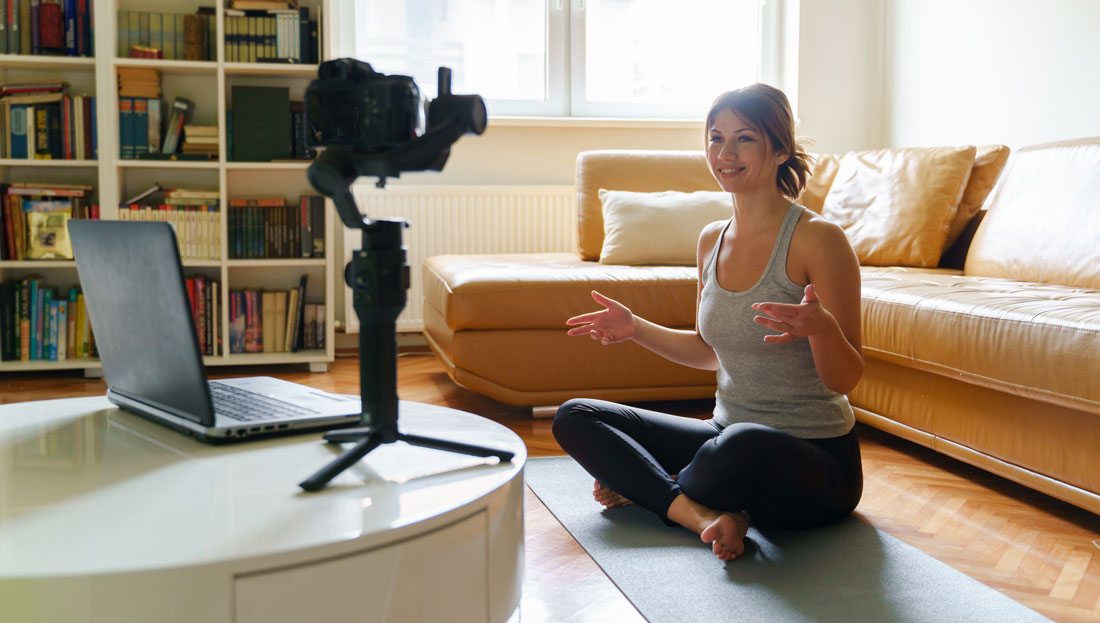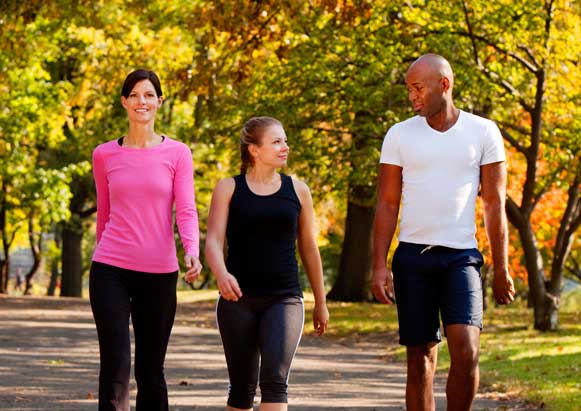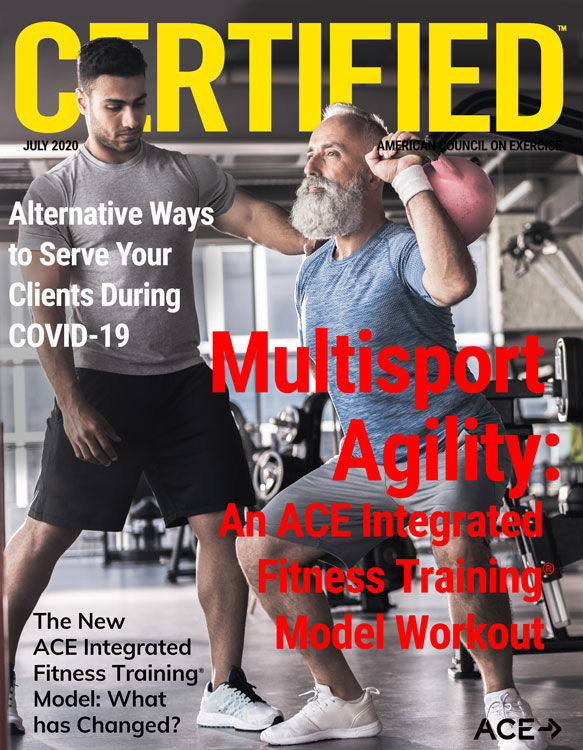
What You Need to Know
- To continue serving your clients when a pandemic has turned the world upside down, start by listening to what they need and practicing open and honest communication.
- What sets you apart is your ability to connect with clients in ways that empower them to pursue goals that are meaningful and linked with their personal values.
- Be creative, flexible and mindful of your clients’ needs, as they will undoubtedly shift in the weeks and months to come.
- Don’t be afraid to try new approaches and learn as you go. You may discover not only new revenue streams, but also new ways to connect with your clients.
The question that so many health coaches and exercise professionals have been asking themselves for the past few months is, “How can I continue to best serve my clients during these trying times?”
For many, the answer has come in the form of virtual sessions. For others, the solution has been outdoor training with appropriate social distancing. The key is to identify the best way to serve each individual client, and that begins with open and honest communication.
Listen and Learn What Your Clients Need
The last thing you want to do is develop a plan in isolation, without first talking with your clients. A well-thought-out virtual coaching program is meaningless if your primary clientele are, for example, older adults who may not be comfortable with, or have access to, the technology while at home. Similarly, an outdoor training program in a local park (assuming parks are open where you live) is doomed to fail if your client base is comprised of parents who are unable to leave their kids at home in order to attend.
The need for open communication is ongoing and should be used purposefully during every interaction with clients. Shana Verstegen, fitness director for Supreme Health and Fitness in Madison, Wisc., suggests opening each session by seizing the opportunity to connect and to provide clients with a much-needed sense of normalcy.
She suggests asking some simple questions that will enable you to gauge the client’s emotional state, physical needs and mindset. Questions like, “How are you feeling?” and “What hurts today?” can effectively kick off a productive conversation.
"Questions like, “How are you feeling?” and “What hurts today?” can effectively kick off a productive conversation."
While many clients may be having trouble finding ways to be active, you should be mindful of the fact that more performance-oriented clients may be struggling to find the motivation to exercise because there are no events or competitions for which to train. This may be an unusual and unsettling experience for them, so it’s important to collaborate and empower them to uncover new and meaningful goals.
Let’s assume you’ve talked with each of your clients and asked, “How can I best serve you right now?” You’ve mapped out a plan to move forward and have already begun to train or coach clients in ways that are new to you and your business model. Let’s now take a look at the two most common scenarios that are currently being implemented.
Virtual Coaching/Training
Like nearly every other industry in the world, the fitness industry has largely gone virtual. Many trainers and coaches have found that virtual sessions have allowed them to maintain relationships with existing clients and even find some new ones.
Verstegen reminds us that clients choose to work with health coaches and exercise professionals in large part because they value the rapport and interpersonal relationship that come along with the personalized programming. Remember, there are countless workout videos available on YouTube and a seemingly limitless amount of nutrition advice on the Internet. What sets you apart is your ability to connect with clients in ways that empower them to pursue goals that are meaningful and linked with their personal values. This is even more important when working with clients virtually, as they are likely feeling isolated and in need of social connection.
You may have to modify your training for many of your clients, so be creative but purposeful in your programming. For example, before your initial session with each client, be sure to ask what type of equipment he or she has available. If a client responds by saying, “I have a set of dumbbells up to 25 pounds, a stability ball and a small weight bench,” you can probably assume he or she has a safe space to exercise and is accustomed to in-home training. On the other hand, if a client says, “I don’t have any equipment at all,” you may want to give the client a list of household items he or she can use during workouts (e.g., water jugs and cans of soup). You may also want to ask him or her to clear some space to eliminate tripping hazards.
Other areas you may have to adjust are giving feedback and cueing. Verstegen recommends having clients perform safer movements with less weight. “Without the ability to offer tactile, or hands-on, cueing,” she says, “external cueing that offers a visualization of how a movement should feel becomes more important.” In addition, your form and verbal cues have to be spot on when tactile cueing is not an option.
To view webinars and read blogs about virtual coaching/training, visit ACE’s COVID-19 resource page. There, you will find blogs covering how to set up virtual coaching, establish pricing, motivate clients, modify your cueing and deliver great virtual experiences.
Outdoor Exercise
For Jonathan Ross, creator of Funtensity, author of the book Abs Revealed and ACE Personal Trainer of the Year award winner, the outdoor exercise sessions he’s been offering in his neighborhood began organically from conversations with friends in the community and then grew via word of mouth. He has since invited clients, neighbors and friends to attend.
The first step when planning an outdoor exercise session is to evaluate the safety of the environment and modify or move the session as needed. In addition, it is essential that you adhere to the pandemic guidelines in your area. For example, where Ross lives, social distancing guidelines call for outdoor gatherings to be no more than 10 people, so he limits class size to nine exercisers and designs the class to ensure appropriate social distancing.
When it comes to designing the actual workouts, Ross echoes Verstegen's comment about the need to focus on rapport building and the development of interpersonal relationships with clients. He accomplishes this in a few different ways, all of which are meant to maximize engagement. For example, he may ask participants to mimic his movements or introduce reactive training so that they are forced to focus on his cues. He also develops camaraderie by having participants work in pairs—from a distance. For example, one participant may have to hold a plank or perform push-ups while his or her partner performs a set number of repetitions of another movement or runs up the street and back.
In terms of charging for these sessions, Ross says it’s important for people to know that they are helping you stay afloat financially during these strange times. His outdoor classes are less expensive per person or couple than he would normally charge, and that lets his clients know that he’s recognizing that they may be experiencing financial hardships as well.
Finally, Ross reminds exercise professionals, “If you’re going to charge people, you have to make the experience unique.” There are so many free options online that you have to give people a reason to choose to attend, and that starts with demonstrating genuine concern for clients and their well-being and then offering a playful and unique opportunity for them to improve their health while enjoying much-needed social interaction.

A Word About Green Exercise
The term green exercise refers to any physical activity performed in natural environments, including anything from a walk around the neighborhood to a long day of rock climbing or kayaking. The important thing in terms of working with your clients during this pandemic is that there are proven benefits to moving some of their workouts outside, beyond those associated with the exercise itself. An outdoor walk, for example, yields benefits beyond those seen by walking that same distance and speed indoors on a treadmill. Additionally, research has shown that green exercise improves brain and heart function and reduces stress levels. Sharing this type of evidence-based information with clients may provide additional motivation for them to attend your outdoor sessions.
Legal Considerations
These alternative means of working with clients raise some important legal issues for health coaches and exercise professionals. Whether you’re training your friends and neighbors in the cul-de-sac or coaching a client who asks if her husband and kids can join the session, when acting as a health coach or exercise professional, you are likely facing legal situations that may not be covered by your usual preparticipation paperwork.
Are you legally responsible if a neighbor experiences heat exhaustion while exercising in the street or if a coaching client’s husband twists an ankle while exercising in his living room?
Well, it’s complicated.
As Mark Nagel, EdD, professor in the Sport and Entertainment Management Department at the University of South Carolina, wrote about virtual coaching in a recent blog on Legal and Insurance Issues in the Time of COVID-19, “Just because distance prevents personal contact does not mean that the potential liability for the exercise professional disappears.”
In situations where you are interacting with clients (as opposed to them exercising to recorded videos, which carries less potential liability for you), whether that interaction is virtual or from a safe distance outside, you have a duty to keep clients safe by requiring them to be physically prepared for exercise (through a doctor’s pretraining physical exam, if necessary). In addition, observation and two-way communication during sessions are essential to ensure that clients’ surroundings are free of hazards and that the client remains pain-free and does not overexert him- or herself.
So, while inviting friends, neighbors and spouses to get moving is a great idea, understand that those people who are under your supervision, whether formal clients or not, could view any injuries they sustain as your fault and attempt to hold you financially responsible. You need to be diligent when it comes to client safety and your own liability, so check with your liability insurance provider to make sure you are covered adequately for instruction in outdoor and virtual environments and insist that no one exercises under your supervision without first verifying their health status and then signing a waiver. Regardless of location, exercise professionals must adhere to professional standards for duty of care.
Flexibility Is Key
When determining how to best continue to serve your clients, be creative, be flexible and be mindful of your clients’ needs, as they will undoubtedly shift in the weeks and months to come. Many exercise professionals are finding that their clients genuinely appreciate and enjoy the virtual and outdoor workouts being offered during these times of social isolation. In fact, both Ross and Verstegen plan to continue their sessions in some form even after the COVID-19 pandemic has passed. So, don’t be afraid to try these new approaches and learn as you go. You may discover not only new revenue streams, but also new ways to connect with your clients.





 by
by 



